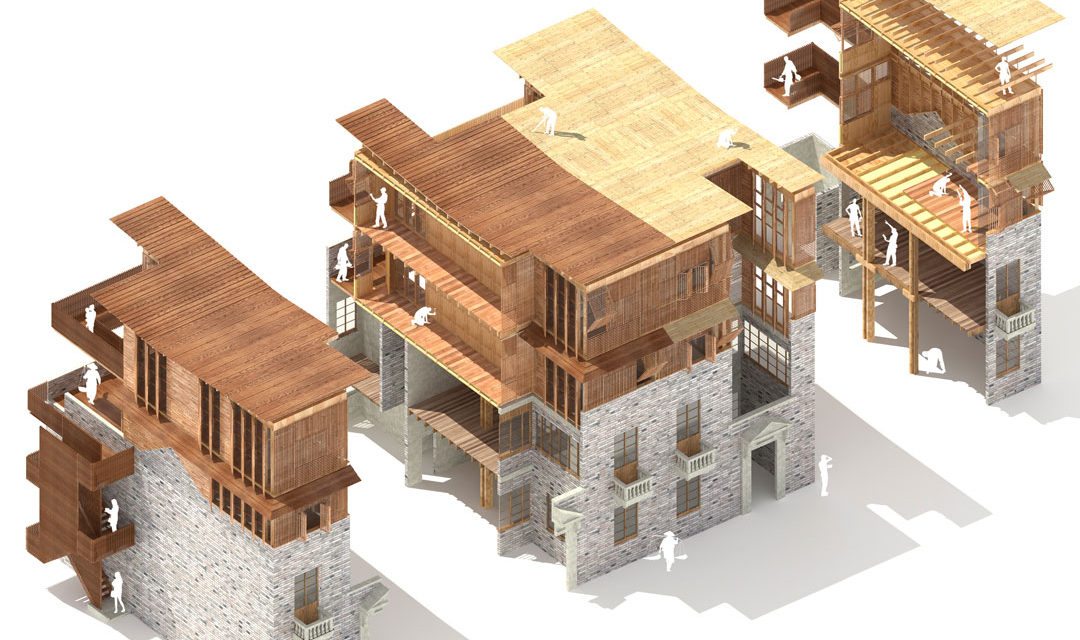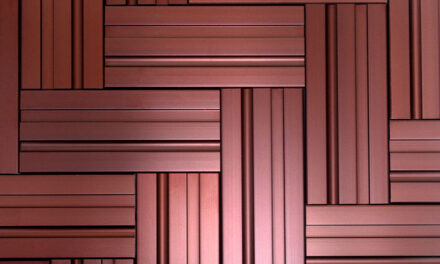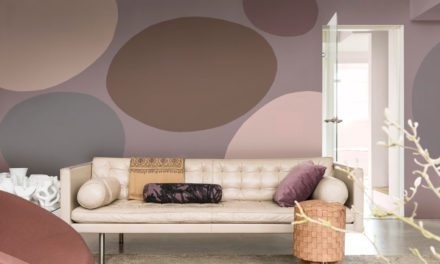Metsä Wood’s competition has inspired architects worldwide to design wooden extensions to city centers. Entries from 40 countries proposed wooden solutions to the challenges of urbanization. Winning designs were made to New York, Shanghai and Tampere, Finland.
Architects from 40 countries created their Plan B for urbanization using wood (Kerto® LVL ˗ laminated veneer lumber) as the main material. The task was to design a wooden extension to an existing urban building. The entries were designed for 69 cities worldwide, including Sidney, Shanghai, New York, Berlin, Paris and London. The competition was organized by Metsä Wood.
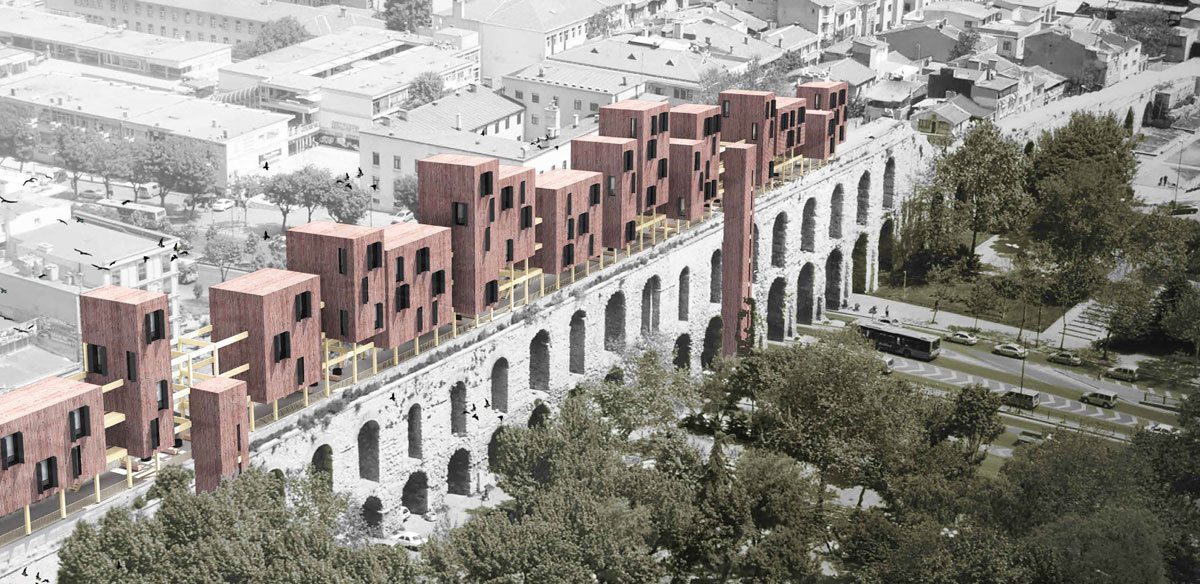
Colliding Lines and Lives by Sinan Gunay and Nurhayat Oz. The City Above the City architecture competition. Runner-up in small scale interventions category. Istanbul, Turkey. Photographer: Sinan Gunay and Nurhayat Oz
The Jury
The jury members were chosen because of their concern for the challenges and threats posed by growing urban populations; and a visionary understanding of how engineered wood can be used to mitigate the negative effects of urbanization. The jury has extensive in-depth expertise in wood structure architecture and sustainable design.
“Construction must become sustainable and cities must stay liveable. I am happy that so many architects share this view, especially the younger generation,” said Michael Green from MGA architects and DBR Design Build Research, who chaired the jury. “The entries were innovative and added value to both the building and the community.”
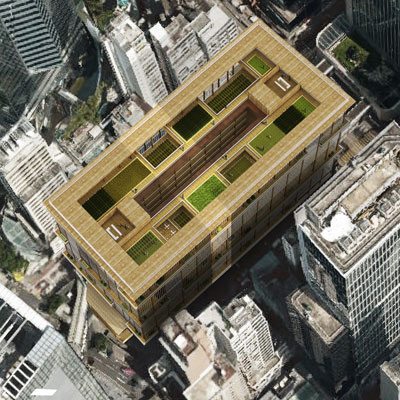
“The Green Intervention” for Hong Kong by Minjae Kim and Kwang Ja Oh of Kim Min Jae Architects (Hong Kong)
“Building wooden extensions in existing communities can be a significant solution for urbanisation. Instead of demolishing communities, we could enhance them,” said Mike Kane, an architect and senior lecturer at London South Bank University. “This competition should be seen as a catalyst for future debate on sustainable and progressive cities worldwide.”
“The designs were realistic and demonstrated a good understanding of LVL as a building material,” said Professor Stefan Winter, who holds the Chair of Timber Construction and Structural Engineering at the Technical University of Munich. “Because of its lightness and fast construction time, Kerto LVL is an ideal material for this challenge.”
Winners from different parts of the world
“Urbanisation has increased interest in building with wood. The potential for timber extensions is large – over 100 million square metres in Germany alone,” said Mikko Saavalainen, SVP of Business Development at Metsä Wood.
Winners received awards in two categories: small-scale intervention and large-scale intervention. The total value of the prizes was EUR 35,000.
Small-scale intervention category
First prize winners:
-
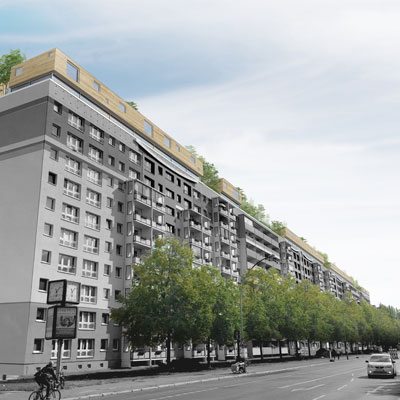
“Dachkiez, Village on the Roof” for Berlin by Sigurd Larsen Design and Architecture (Germany): Simon Jendreizig, Vanessa Panagiotopoulou, Marlene Kjeldsen, Guillermo Fernandez Villar and Pedro Campos Altozano.
Nile Greenberg (USA) for his design “Dear Landlord” for New York. Nile Greenberg spoke of the competition and his design “The Plan B competition invited us to think of solutions which prioritize density, scale and urbanization, but in some cities, such as New York City, we have an urban fabric so thick and intense that it takes significant effort to find distance from it. This proposal is for a communal vacation home which requires no effort to access. It turns our idyllic roof into a small agricultural farm with beautiful wooden house separating our community from the asphalt of the city.”
- Alma Studio (Spain) for their design “Vertical Lilong” for Shanghai. Designers Luis Fco. Romero Martinez and Sandra Gomez Alba explained “A Shikumen Lilong is a laneway in Shanghai (also call Longtang or just Lilong) and by extension, a community arranged around a laneway or several interconnected laneways.”
The runners-up:
- “Colliding Lines and Lives” for Istanbul by Superspace (Turkey): designers Sinan Gunay and Nurhayat Oz.
- “Dachkiez, Village on the Roof” for Berlin by Sigurd Larsen Design and Architecture (Germany): Simon Jendreizig, Vanessa Panagiotopoulou, Marlene Kjeldsen, Guillermo Fernandez Villar and Pedro Campos Altozano.
Large-scale intervention category
First prize winners:
- “Tammelan Kruunu” for Tampere, Finland by Lisa Voigtländer (Germany) and SungBok Song (Korea). The designers explained “The design presents an extension, which is placed on top of an existing concrete element building from the 60´s, a building typology that can be found in many cities around the world.”
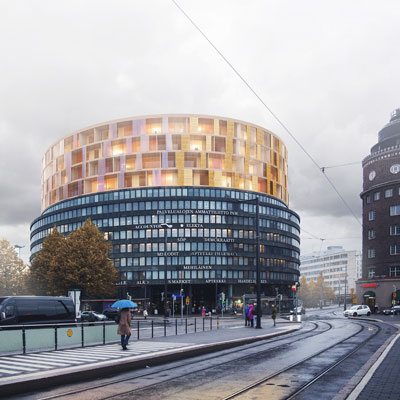
“Plug-In” for Helsinki by Jari Lonka, Francesco Allaix and Lilja Mustila of L Arkkitehdit (Finland)
The runners-up:
- “Lightweight Living” for Perth by Joshua Duncan and Chaz Flint of Basic Architects (Australia).
- “Plug-In” for Helsinki by Jari Lonka, Francesco Allaix and Lilja Mustila of L Arkkitehdit (Finland).
- “Aboveall” for New York by Italian architects Giuseppe De Marinis Gallo and Gianluca Gnisci.
- “The Green Intervention” for Hong Kong by Minjae Kim and Kwang Ja Oh of Kim Min Jae Architects (Hong Kong).
In the article “Building additional floors with wood” Martin Langen, CEO of B+L Marktdaten GmbH in Bonn, Germany explained “The growing demand for living space per capita means many single-family houses from the sixties and seventies appear too small for many families. For this reason, an extension has been built onto many of these houses.” With respect to larger scale extensions he went on to say “What has been done less frequently until now, however, are large-scale extensions of office buildings, hotels or large residential buildings. After some housing associations, for example in Munich, had very good experiences with extensions made of timber, this issue has increasingly become the focus of property owners.”
The “City Above the City” competition sheds light on the growing demand for living space – both small and large. The innovations created by these talented young architects exemplify the global awareness of this need and the desire to find creative solutions.
Read more about the “City Above the City” competition. All article and design award references are from Metsä Wood’s website http://www.metsawood.com and associated press releases. Photos are courtesy of Metsä Wood.
About Metsä Wood
Metsä Wood provides competitive and environmentally friendly wood products for construction, industrial customers and distributor partners. We manufacture products from Nordic wood, a sustainable raw material of premium quality. Our sales in 2015 were EUR 0.9 billion, and we employ about 2,000 people. Metsä Wood is part of Metsä Group.

